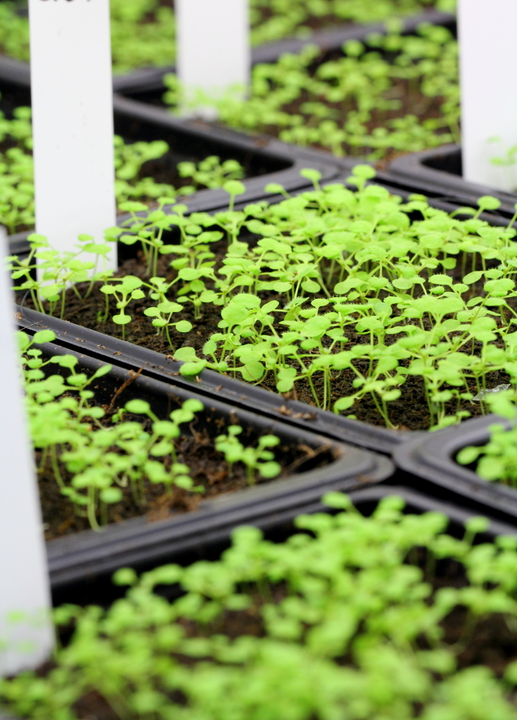Research done at UC Davis and the Max Planck Institute discovered mutation bias in Arabidopsis thaliana plants
By SONORA SLATER — science@theaggie.org
Grey Monroe, who is currently an assistant professor in the Department of Plant Sciences at UC Davis and principal investigator at the Monroe Lab, was a postdoctoral student in Germany at the Max Planck Institute when he made a surprising discovery — one that led to three years of plant genome research.
The research, published on Jan. 12 in the journal Nature, challenges the theory that DNA mutations are random.
“You’ve probably heard in biology class at some point that mutations are random,” Monroe said. “What we found is that the places that have very low mutation rates are actually the places in the genome that are responsible for the most important biological functions of the plant.”
According to a recent press release about the study, researchers spent three years sequencing the DNA of hundreds of Arabidopsis thaliana, or thale cress. Monroe said that this commonly-studied plant is the “fruit fly of plant research” due to its relatively small genome.
The press release went on to explain that researchers grew specimens in a lab environment, “which allowed plants with defects that may not have survived in nature [to] be able to survive in a controlled space.” When the genomes were then sequenced, analysis of the mutations revealed a non-random pattern.
Detlef Weigel, the scientific director at Max Planck Institute and senior author on the study, talked about what “random” means when it comes to mutations.
“What is generally accepted is that mutations are random with respect to being ‘good,’ ‘bad’ or ‘neutral,’” Weigel said. “We assume that’s random, and then natural selection produces that pattern that we see. But this showed that instead, there are fewer mutations to begin with in those really important genes.”
However, even after seeing a pattern of non-random mutation, explanations other than mutation bias remained.
“How do you know you’re not just accidentally observing natural selection?” Monroe said. “Because we would expect natural selection to remove that bias anyway. So without getting into the weeds too much, no pun intended, we spent a lot of time doing analyses that were able to show that that was not what was going on.”
According to Mariele Lensink, a second-year graduate student at UC Davis and one of the authors of the paper, they did this through running theoretical experiments and eventually creating a statistical framework to show support for evidence of mutation bias.
“I developed a way for us to confidently say that the results were due to mutation bias rather than purifying selection,” Lensink said.
Monroe described one of the ways the results of this study might be applied to future research.
“Mutation is the source of cancer and genetic disease,” Monroe said. “If we can fully understand how this plant is protecting its most important places of the genome from mutating, understanding how that works and how that evolves… it’s not going to cure cancer, but it just leads to a bunch of new questions that could inspire research.”
Monroe went on to introduce another potential application of the study’s findings.
“This shapes our understanding of genetic variation in general, and this is really relevant for understanding crop breeding,” Monroe said. “Crop breeding is basically applying evolutionary genetic principles in directions that we want to achieve. We want to make plants that are more nutritious and more climate-resilient and a lot of the analyses that underlie how we go about that breeding rely on an understanding of mutation.”
Lensink offered some final words about how important this could be to our understanding of basic biology.
“We’re readdressing how we think about mutation in general, and I think that has implications for just how organisms adapt and change,” Lensink said. “This is the kind of research that changes textbooks.”
Written by: Sonora Slater — science@theaggie.org




